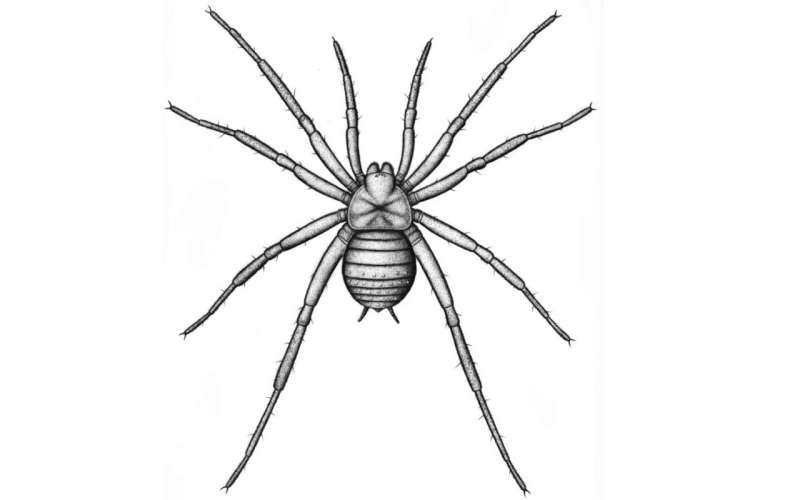August 7, 2023 report
This article has been reviewed according to Science X's editorial process and policies. Editors have highlighted the following attributes while ensuring the content's credibility:
fact-checked
trusted source
proofread
Museum curator identifies the oldest spider fossil ever found in Germany

Jason Dunlop, curator of Arachnida and Myriapoda at the Museum für Naturkunde, in Berlin, has identified a spider held at the museum for several years. In his paper published in the journal PalZ, he describes the features of the spider and also notes that it is the oldest spider fossil ever found in Germany.
The fossil was unearthed at Piesberg, a quarry near Osnabrück, Germany, approximately four years ago by Tim Wolterbeek, a geoscientist, with Universiteit Utrecht. He eventually passed it on to the museum in Berlin, where Dunlop undertook a study of the ancient arachnid.
The spider was dated back 310 to 315 million years ago by studying other material in the strata in which it was found, putting it in the Paleozoic—and marking it as the first from that era to have ever been found in Germany.
Dunlop also found that it was a new species, and promptly dubbed it Arthrolycosa wolterbeeki. Further study showed that the fossil was in excellent condition (even its spinnerets, the silk producing organs, could be seen) and nearly wholly complete. He estimates that the spider was likely approximately one centimeter long—fossilization would have made it shrink.
He also estimates the legs were likely approximately four centimeters long when the spider was alive. It also had a segmented abdomen, marking it as one of the "limb spiders" of its time. Dunlop found the spider to be of the order Araneae, which separates it from other spider-like groups. He notes that it is just one of 12 Carboniferous species assigned to Araneae. It also resembles the brown recluse spider of modern times.

Dunlop notes that it appears that fossilization of the specimen must have been due to extraordinary circumstances as its features suggest it was likely burrow-dwelling, which would have limited its contact with water.
Prior research has shown that the area in which it was found was forested at the time the spider was alive, which suggests it spun its web on the forest floor, hoping to capture even tinier prey.
Dunlop also points out that the spider was likely male, despite the lack of a palpal bulb, since females of its kind would most likely have been sedentary.
More information: Jason A. Dunlop, The first Palaeozoic spider (Arachnida: Araneae) from Germany, PalZ (2023). DOI: 10.1007/s12542-023-00657-7
© 2023 Science X Network





















